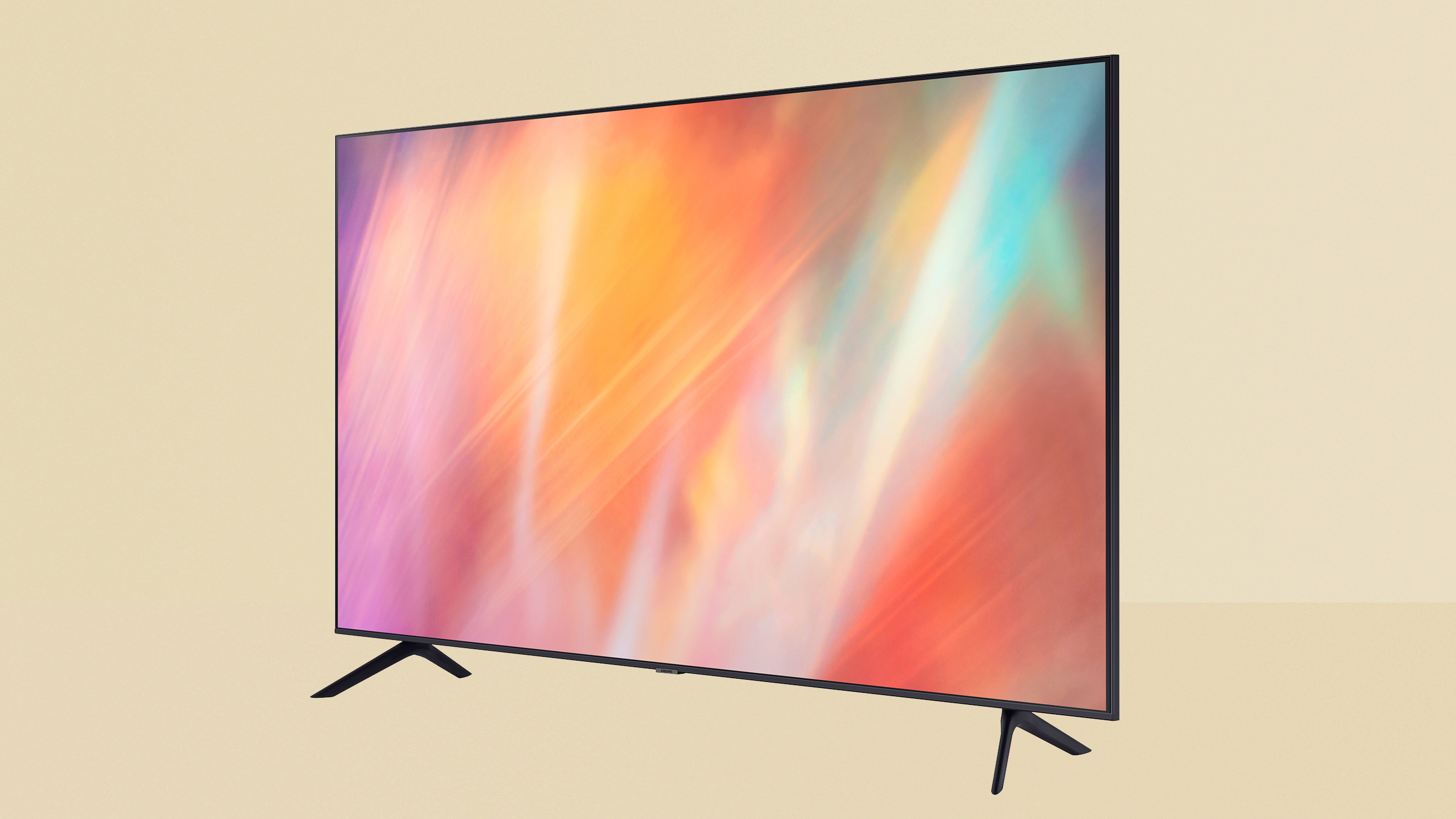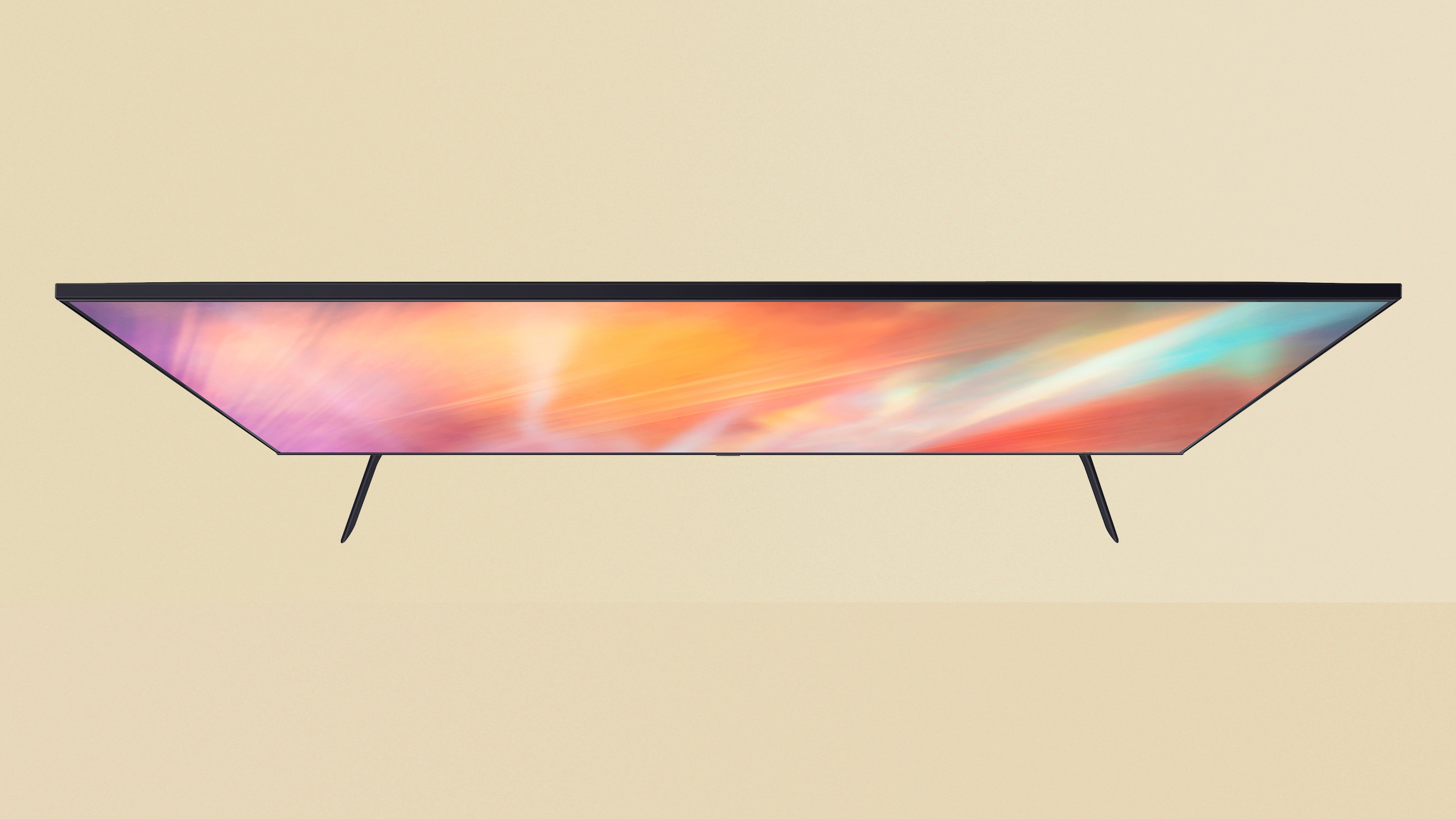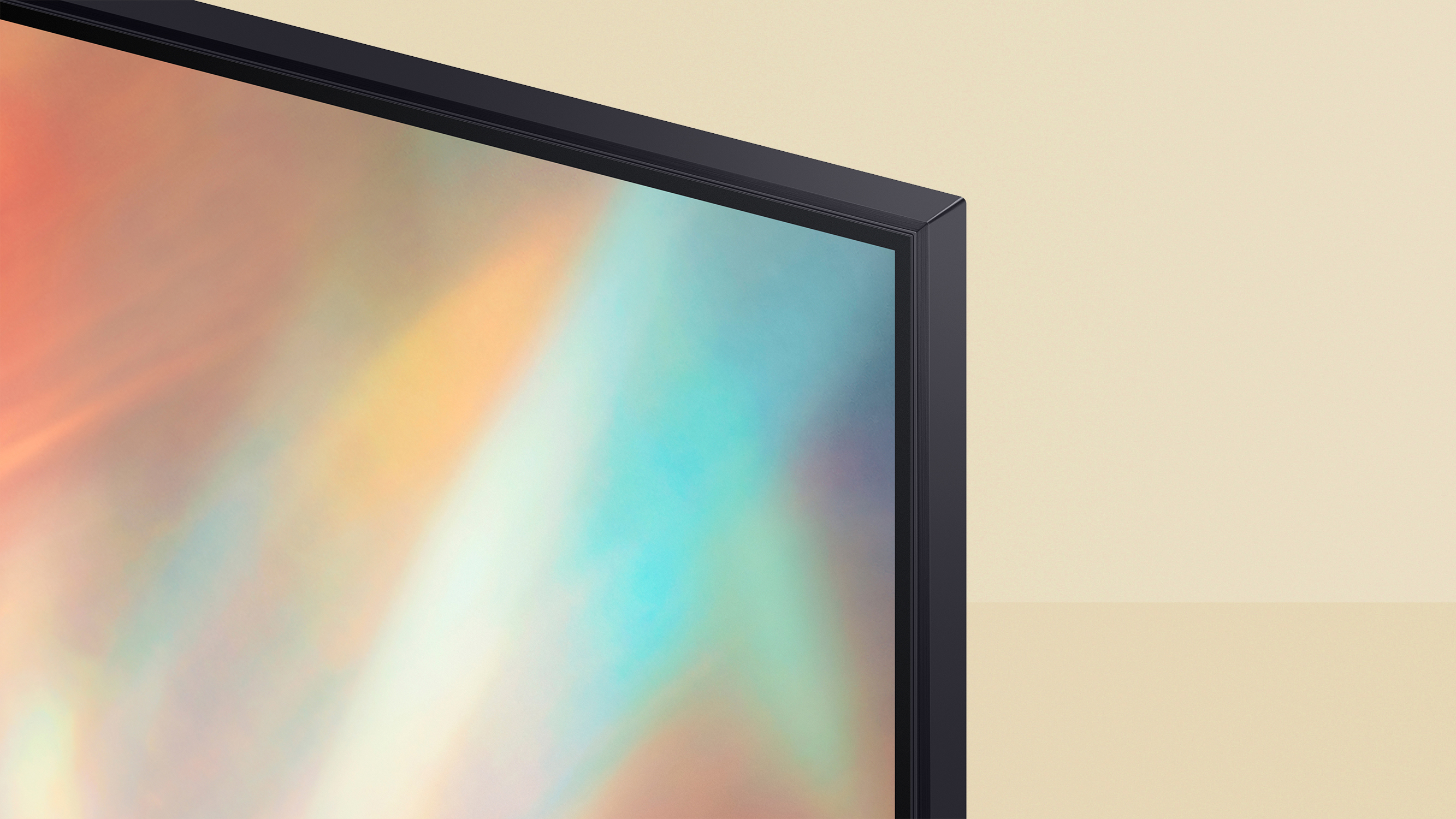Samsung AU7100 review (43AU7100): cheap 4K TV heaven, and a top smart TV
The Samsung AU7100 delivers a bold and beautiful 4K images that belie its price, and its smart TV features are the best you can get in budget sets


The Samsung AU7100 is a sensibly priced television, available at screen sizes that work for you, that is more than competent where the televisual basics are concerned and has some real areas of picture quality expertise. You don't get much more for this price.
-
+
Detailed, composed 4K images
-
+
Good contrast and motion handling
-
+
Solid performance for gaming
-
+
Great smart TV interface
-
-
Not the brightest screen around
-
-
No Dolby Vision
-
-
Sound is underpowered
Why you can trust T3

This Samsung AU7100 review looks at the 43-inch version of Samsung’s most affordable 4K LED TV range. The range is expansive (how else would you describe the availability of eight different screen sizes?) and incorporates quite a few of the features from more elite models that make the best Samsung TVs so compelling.
Specification is very decent at the price, with highlights including 4K resolution, some strong gaming features, an extremely worthwhile smart TV interface and numerous control options.
Of course, TV battles aren't fought on paper, but the good news is that it really delivers on image quality for the price, and this model is absolutely one of the best 43-inch TVs around for those keeping to a lower budget.
Build quality is everything you’d expect from a Samsung product too, so on paper at least, the AU7100 looks equipped to compete with any of the best TVs under £500, and with larger-screened models in the best TVs under £1000.
So there’s really only the customary lack of Dolby Vision HDR to be navigated, which is a feature that some of its competitors offer, but doesn't hold this set back at all, as we'll see. Here's our full verdict.
Price and release date
The AU7100 range is on sale now, and in this 43-inch guise it’s priced at no more than £449. But Samsung knows ‘the mainstream’ is a very disparate group of people, and so the AU7100 is also available in screen sizes of (deep breath) 50 inches (which will set you back £549), 55 inches (£599), 58 inches (£TBC), 65 inches (£799), 70 inches (£899), 75 inches (£999) and 85 inches (£1,799, a price much smaller than the screen itself). Can’t find an appropriate screen-size in that list? That’s hardly Samsung’s fault, is it?
You can find the current lowest prices on all these sizes below – the prices are pulled live from retailers, so should be cheapest available. It's also worth checking our Samsung discount codes to snap up a saving.
Get all the latest news, reviews, deals and buying guides on gorgeous tech, home and active products from the T3 experts
Samsung routinely develops specific model variants for different territories, and that appears to be the case here. Consequently there’s no pricing for the AU7100 in the United States or in Australia – because this exact model isn’t on sale in those markets. Look for the Samsung AU7000 instead, when available, which is likely to be a) very similar, b) extremely keenly priced, and c) available in an absolute stack of screen sizes.

Features & what's new
There are, unsurprisingly given the price, not that many whistles and bells to the AU7100. Instead, the feature-set is basically a refinement of what Samsung’s been perfecting since the early days of 4K LED-backlit LCD TVs – and consequently it’s the sort of TV that would have cost 10 times this amount 10 years ago.
The 4K LCD ‘Crystal UHD’ panel is backlit by edge-arranged LEDs, and the pictures it displays are governed by the latest iteration of Crystal Processor 4K processing engine. It is happy to support HDR10, HDR10+ and HLG HDR standards, but – because some things never change in Samsung-land – not Dolby Vision.
Wireless connectivity is available via Bluetooth 4.2 and dual-band Wi-Fi. As far as physical connections go, there are three HDMI sockets, an Ethernet input, a CI card slot and a USB 2.0 input – all the HDMI inputs incorporate the Auto Low Latency Mode aspect of the HDMI 2.1 specification, which means next-gen consoles can tell the TV to switch into its gaming-friendly mode. This is the only HDMI 2.1 feature, though, so while it's very nice to have around, it means this doesn't do as much as the very best gaming TVs.
One of the HDMI sockets features eARC compatibility for use with soundbars, while there’s also a digital optical output for use with more, um, vintage soundbars.
Picture performance
This is a 4K TV, so it doesn’t require any great leap of imagination to understand it does its best work with 4K content. And no matter if it’s derived from a UHD Blu-ray disc or a streaming service (ideally, in this case, Amazon Prime Video, because it has a decent selection of titles that use HDR10+), the AU7100 is capable of convincing and engrossing images.
It might be quicker to deal first with the few aspects of picture performance that underwhelm here, because they are very few. It mostly concerns white tones and black tones: the Samsung struggles to produce truly deep black tones, and its lack of out-and-out brightness means its whites don’t exactly pop from the screen.
It follows that contrasts aren’t as wide-ranging as they might be, and those movies that rely a lot on darkness (anything set in outer space, just as an example) don’t have the inkiness to their blacks that more expensive TVs (especially OLEDs) can muster. Of course, any OLED costs at least twice as much as this, so that's to be expected.
For its price, the Samsung controls its backlighting well, so while ‘black’ here really means ‘very very dark grey’ there is, at least, uniformity to it. It's done well, it's just limited by budget.
The AU7100 loads both blacks and whites with plenty of detail, too, so in that respect its images are just as varied and nuanced as they are elsewhere. Detail levels are high across the board, in fact, which means the all-important skin-tones and skin-textures pretty much any live-action movie relies on are confidently described.
‘Confident’ is also as good a way as any to describe the way the AU7100 defines edges and handles on-screen motion. The set-up menus here aren’t all that extensive (which is, in some ways, a mercy) but they’re more than capable of allowing you to extract smooth, persuasive movement from pictures.
The colour palette is pretty wide and capable of great subtlety, too, and the Samsung is able to control even tight, high-contrast patterns without any shimmer or blocking. Consider too the almost complete absence of picture noise in even the most complex images, and the AU7100 demonstrates itself to be a very capable 4K screen.
It’s not half-bad as a screen on which to enjoy upscaled Full HD 1080p images, too. Of course there are the predictable shortfalls in detail levels, and some of the real crispness of edge-definition or the nuances of skin-tone can go astray, but in general the Samsung does a very decent job of upscaling some 1080p Blu-ray content. Its facility with motion-handling, for example, seems almost entirely unaffected by the amount of work it’s getting through.
Step down any further, though – to a DVD, for example, or even some daytime TV off-air reruns of 20th century content – and the AU7100 throws in the towel somewhat. Picture noise sets up camp, motion loses a lot of certainty and most of the nuance in colour shading goes astray too. So the lesson is: never watch antique content on your Samsung AU7100.
Feel free to play console games on it, though. The ability to support ALLM is good news for next-gen gamers, and input lag is respectably low in ‘Game’ mode, and all the admirable stuff about picture quality from higher-quality sources is present and correct too.

Sound quality
20 watts of power. Two full-range drivers delivering stereo sound. The AU7100 is by no means the worst-specified TV around where audio is concerned, but it’s not specified to set any pulses racing – and neither will the sound it makes.
In fairness, the Samsung sounds reasonably distinct through the midrange, so dialogue is easy to follow. It doesn’t get edgy or in any other way unhappy if you decide to deploy every last one of those 20 watts, either.
But in essence, the AU7100 sounds flat and undemonstrative. This set works with Samsung’s ‘Q Symphony’ range of soundbars, though, which combine the set's speakers with the soundbar's for a bigger audio boost overall. That's probably the way to go, though there are some great budget options in our list of the best soundbars that are perfect for a cheaper screen like this. We even have a specific list of the best soundbars for Samsung TVs.
Design and usability
Samsung has done the sensible thing with the design of the AU7100: there’s really not much of it. The company’s claim that this is a ‘bezel-less’ doesn’t take long to disprove, but the bezels are agreeably slim and nicely finished.
The simple click-to-fit plastic boomerang feet on which it stands are nicely minimal too (though they’re quite far apart – make sure your surface is wide enough to stand your new TV on).
And, um, that’s really just about it. The AU7100 is nicely made, from plastics that don’t feel overtly cheap, and at 59mm deep it’s not the bloater some other affordable LCD designs are.
As is generally the case with Samsung TVs, the AU7100 is a model of usability. It features a sort of semi-skimmed version of the Tizen interface that’s been so successful for Samsung for ages now, and as a portal into the world of smart TV functionality it really couldn’t be any simpler or more logical. If you want to stream some content, or catch up with some TV, it’s the work of a moment to do so here.
Navigating the interface (or the set-up menus or what-have-you) can be achieved using one of the two remote control handset supplied with the TV. One is an unarguably unpleasant, cheap-feeling clicker with too many buttons that are generally too small. The other is a far nicer, less burdened alternative that just covers the essentials and manages not to feel nasty while it does so.
Or there’s always Samsung’s Smart Things control app, which is just as stable and thorough here as it has been wherever else we’ve used it. And while there’s no integrated voice control capability, the AU7100 can be controlled by Amazon Alexa or Google Assistant if there’s a necessary smart speaker on a common network.

Should I buy the Samsung AU71000?
If you want to pay real-world money for a 4K TV without being somehow made to feel like a cheapskate, Samsung has you covered with its AU7100. A huge range of screen sizes, some very agreeable specification highlights and some genuinely impressive aspects to its 4K picture performance make it a pretty compelling budget option.
Also consider
Hisense is making a big push to establish itself as the front-runner where affordable 4K TVs are concerned, and with the A7200G (a scarcely credible £299 in 43-inch guise) it makes an awfully strong case. No, this TV isn’t the last word in picture quality, sound quality or, let’s not be coy, depth of chassis – but it’s Roku TV smart software is maybe the biggest competitor to Samsung's own great software, and its 4K picture quality is very solid. Here's our full Hisense A7200G review.
In the other direction, if you can step up to Samsung's own AU9000 model, that's also a great option. It's only a little more expensive than this, but it's the best picture quality Samsung offers before you step up to the costly QLED TVs. Here's our full Samsung AU9000 review.
Simon Lucas is a freelance technology journalist and consultant, with particular emphasis on the audio/video aspects of home entertainment. Before embracing the carefree life of the freelancer, he was editor of What Hi-Fi? magazine and website – since then, he's written for titles such as Wired, Metro, the Guardian and Stuff, among many others. Should he find himself with a spare moment, Simon likes nothing more than publishing and then quickly deleting tweets about the state of the nation (in general), the state of Aston Villa (in particular) and the state of his partner's cat.
